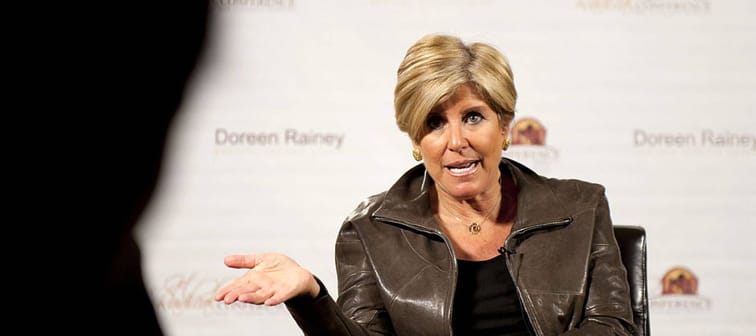Why early habits are so important
Now that you have a number in mind comes the hard part: pulling it off. Orman suggests young people “dive in cold.” She argues the sooner you get in the habit of socking away 15% of your income, the easier it will be to maintain as you start to earn more.
It’s easy to fall into the trap of “lifestyle creep,” relaxing the reins on spending as your income increases. But [taking a close look at your habits]( and looking for any fat you can trim — like, say, cutting down your multiple subscription services, shopping online or swapping meal prepping for delivery services — can help keep you on track.
“As income increases it’s all too common to just spend more, rather than save more,” Orman explains. “By anchoring your financial life early to a goal of saving 15% of your income for retirement, you are defending against lifestyle creep.”
By building this habit, Orman argues young people will be in good shape decades from now. Waiting a decade or two would mean they’re just in fine shape.
Of course, Orman realizes all the essentials — rent, food and whatnot — all account for a big part of your budget, too. But she argues retirement savings should still get prioritized. Instead of trying to find room in your budget to set aside 15% for savings, she suggests you “right-size your spending” around that item line.
“If that means renting a less expensive place, that’s the right trade-off. If that means eating in a bit more than eating out, that’s the right tradeoff,” Orman writes. “If that means focusing more on needs versus wants, that’s the right tradeoff.”
Discover how a simple decision today could lead to an extra $1.3 million in retirement
Learn how you can set yourself up for a more prosperous future by exploring why so many people who work with financial advisors retire with more wealth.
Discover the full story and see how you could be on the path to an extra $1.3 million in retirement.
Read MoreBut is it a realistic ask for young Americans?
The median salary for 20- to 24-year-olds in the U.S. is $40,456 a year. Setting aside 15% (the equivalent of about $500/month) might seem like a lot.
According to recent data from McKinsey & Company, those under 25 spend an average of 37.3% of their income on housing. Part of that is likely due to the high housing costs — Zillow puts the average rent in the U.S. currently at $24,720 per year.
While Orman suggests young Americans should then make sacrifices to be able to afford that 15% target, realistically, a lot of young workers will struggle to swing it.
But here’s where she presses her readers to consider how they deliver this message. She doesn’t want young adults to see this 15% target as punishment or a drag. Orman wants you to help the young people in your life “see the potential” of having a retirement saving plan in place “liberating and empowering.”
So if 15% truly feels out of reach for some, why not start small? The idea is to build good habits, so if someone can only afford to set aside 10%, that’s where they should start. Once that feels manageable, increase your savings by 1% each year until you eventually get to 15%.
Regardless, getting the young people in your life to start thinking about retirement sooner than later is crucial. And no doubt they’ll one day thank you for motivating and encouraging them to care about their future financial security.
“It’s a choice that in itself (saving for retirement) and in its spillover effect (causing more intentional spending choices today) will deliver financial security,” she writes.
“How can you not want that?”
Meet your retirement goals effortlessly
The road to retirement may seem long, but with Advisor, you can find a trusted partner to guide you every step of the way
Advisor matches you with vetted financial advisors that offer personalized advice to help you to make the right choices, invest wisely, and secure the retirement you've always dreamed of. Start planning early, and get your retirement mapped out today.







